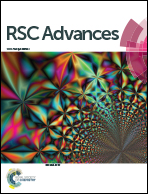Graphene based hyperbolic metamaterial for tunable mid-infrared biosensing
Abstract
Plasmonic biosensors, operating in the mid-infrared (mid-IR) region, are well-suited for highly specific and label-free optical biosensing. The principle of operation is based on detecting the shift in resonance wavelength caused by the interaction of biomolecules with the surrounding medium. However, metallic plasmonic biosensors suffer from poor signal transduction and high optical losses in the mid-IR range, leading to low sensitivity. Here, we introduce a hyperbolic metamaterial (HMM) biosensor, that exploits the strong, tunable, mid-IR localization of graphene plasmons, for detecting nanometric biomolecules with high sensitivity. The HMM stack consists of alternating graphene/Al2O3 multilayers, on top of a gold grating structure with rounded corners, to produce plasmonic hotspots and enhance sensing performance. Sensitivity and figure-of-merit (FOM) can be systematically tuned, by varying the structural parameters of the HMM stack and the doping levels (Fermi energy) in graphene. Finite-difference time-domain (FDTD) analysis demonstrates that the proposed biosensor can achieve sensitivities as high as 4052 nm RIU−1 (refractive index unit) with a FOM of 11.44 RIU−1. We anticipate that the reported graphene/Al2O3 HMM device will find potential application as a mid-IR, highly sensitive plasmonic biosensor, for tunable and label-free detection.



 Please wait while we load your content...
Please wait while we load your content...